ex cathedra Hercules against the manyheaded Hydra
Illustration. by Carole Raddato. published on 17 December 2014. Download Full Size Image. Amphora with Heracles and the Lernaean Hydra (an ancient serpent-like water monster), circa 525 BC, from Etruria ( Italy ). (Photo taken at the "Monsters. Fantastic Creatures of Fear and Myth" exhibition, Palazzo Massimo alle Terme, Rome)

The Lernaean Hydra & Hercules (Illustration) Ancient History Encyclopedia
Hydria (ceramic water container) with Hercules and the Lernaean Hydra (an ancient serpent-like water monster), from Etruria, attributed to the Painter of Aquila, 530-500 BCE. (Photo taken at the "Monsters. Fantastic Creatures of Fear and Myth" exhibition, Palazzo Massimo alle Terme, Rome) Remove Ads Advertisement About the Author Carole Raddato

Hercules and the Lernaean Hydra by Gustave Moreau, 1875/76… Flickr
Heracles and the Lernaean Hydra: uncovering new layers of transcriptome regulation. Spanò G.
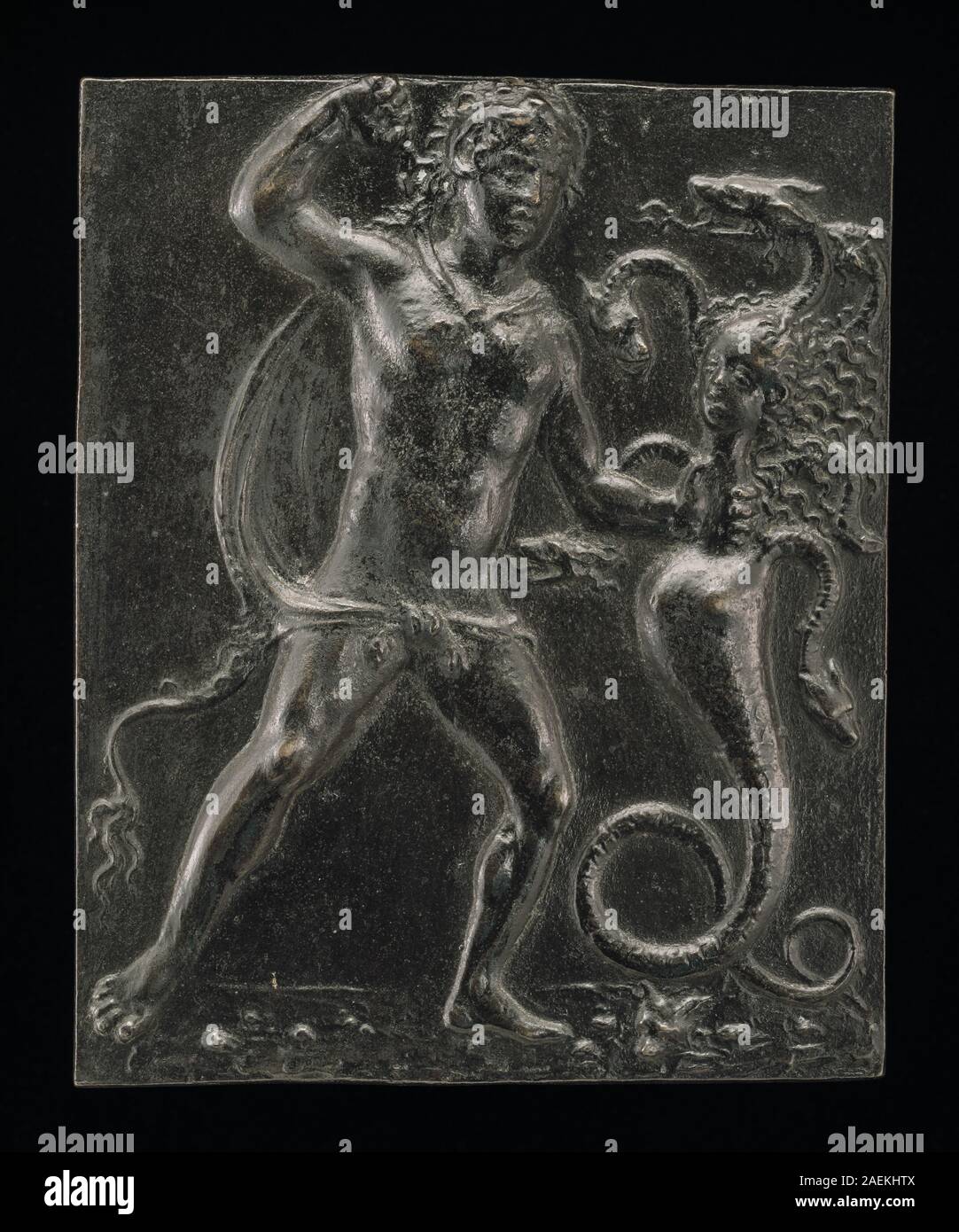
Moderno, Hercules and the Lernaean Hydra, late 15th early 16th
Hercules and the Hydra of Lerna (1876). The encounter between Hercules and the Hydra is one of the most iconic episodes in Greek mythology, exemplifying the hero's valor, resourcefulness, and indomitable spirit. The second of Hercules' Twelve Labors, this task was set upon him by King Eurystheus, a ruler known for his enmity towards the hero.

The Lernaean Hydra and Heracles in Greek Mythology HubPages
The Lernaean Hydra, or the Hydra of Lerna, was a gigantic serpentine sea monster with multiple heads, that existed in both Roman and Greek Mythology. It had poisonous breath and blood and was able to regenerate two heads for every head that was chopped off. This made the Hydra a terrifying figure.

Gustave Moreau Hercules and the Lernaean Hydra, 18761880 Stock Photo
Heracles (Hercules) battling the Lernaean Hydra; at the southern entrance to the Hofburg (Imperial Palace) in Vienna. Hydra, in Greek legend, the offspring of Typhon and Echidna (according to the early Greek poet Hesiod 's Theogony ), a gigantic water-snake-like monster with nine heads (the number varies), one of which was immortal.

Heracles vs the Lernaean Hydra by HerschelHoffmeyer on DeviantArt
Hydra. In Greek mythology the Lernaean Hydra was a gigantic, nine-headed water-serpent, which haunted the swamps of Lerna. Heracles was sent to destroy her as one of his twelve labours, but for each of her heads that he decapitated, two more sprang forth. So with the help of Iolaus, he applied burning brands to the severed stumps, cauterizing.

The Lernaean Hydra & Hercules Explained Greek Mythology YouTube
Hercules and the Lernaean Hydra | The Art Institute of Chicago CC0 Public Domain Designation Hercules and the Lernaean Hydra 1875/76 Gustave Moreau French, 1826-1898 Gustave Moreau developed a highly personal vision that combined history, myth, mysticism, and a fascination with the exotic and bizarre.
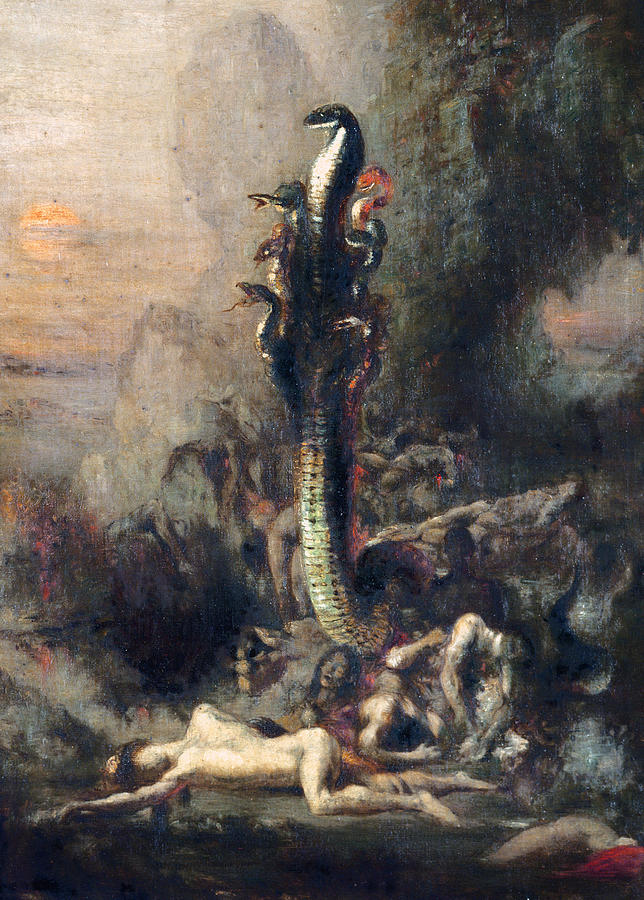
Hercules And The Lernaean Hydra, After Gustave Moreau, C.1876 Oil On
Hercules and the Lernaean Hydra by Gustav Moreau (1875-1876). The Art Institute of Chicago CC0 Overview The Hydra, also called the Lernean Hydra (because it lived near Lerna in Greece), was part of a brood of ancient mythical monsters.
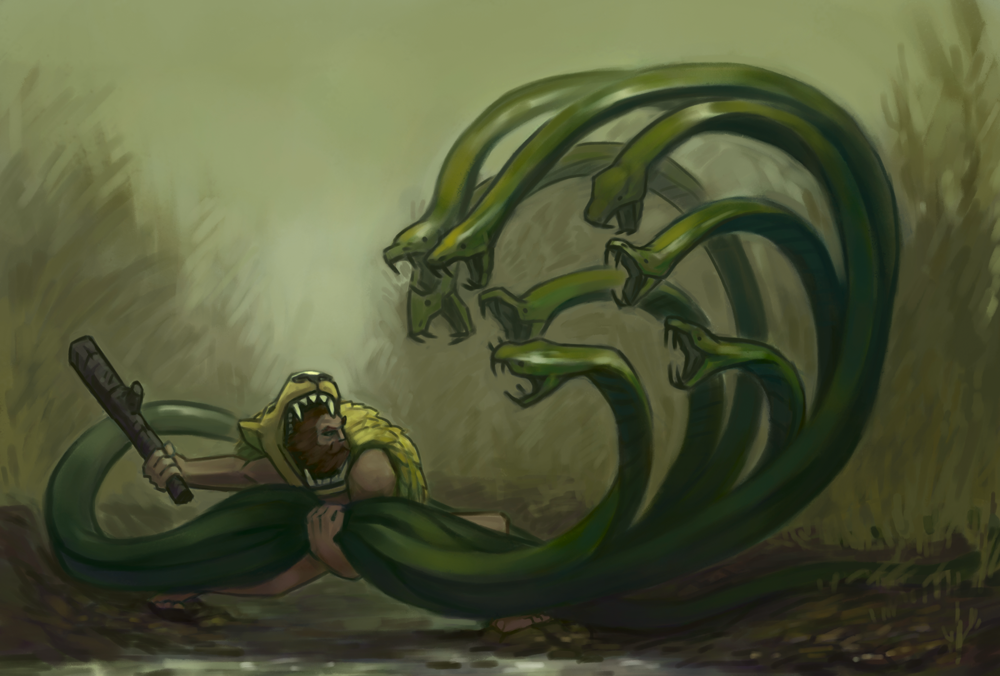
Hercules and the Lernaean Hydra by Chowderheadz on DeviantArt
Hercules and the Lernaean Hydra. 1876. by Gustave Moreau. Gustave Moreau developed a highly personal vision that combined history, myth, mysticism, and a fascination with the exotic and bizarre. Rooted in the Romantic tradition, Moreau focused on the expression of timeless enigmas of human existence rather than on recording or capturing the.

Heracles and the Lernaean Hydra (Illustration) Ancient History
The Lernaean Hydra. Second, Hercules traveled to the city of Lerna to slay the nine-headed Hydra—a poisonous, snake-like creature who lived underwater, guarding the entrance to the Underworld.
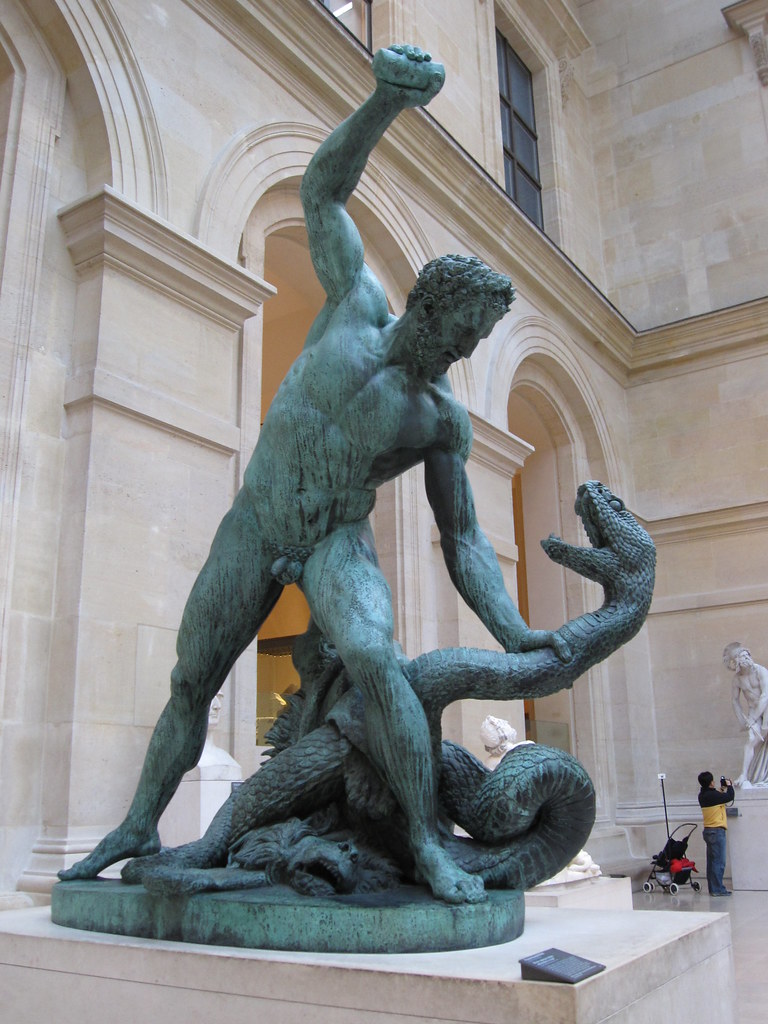
Hercules and the Lernaean Hydra By François Joseph Bosio i… Flickr
The Lernaean Hydra. A long time ago, Greek people believed that a long strip of stars was really an image of a gigantic serpent known as the Hydra. The people of Lerna were terrorized by this serpent--a horrifying beast with many snake-like heads, one of which was immortal. The heads of the Hydra could grow back even if they were cut off.
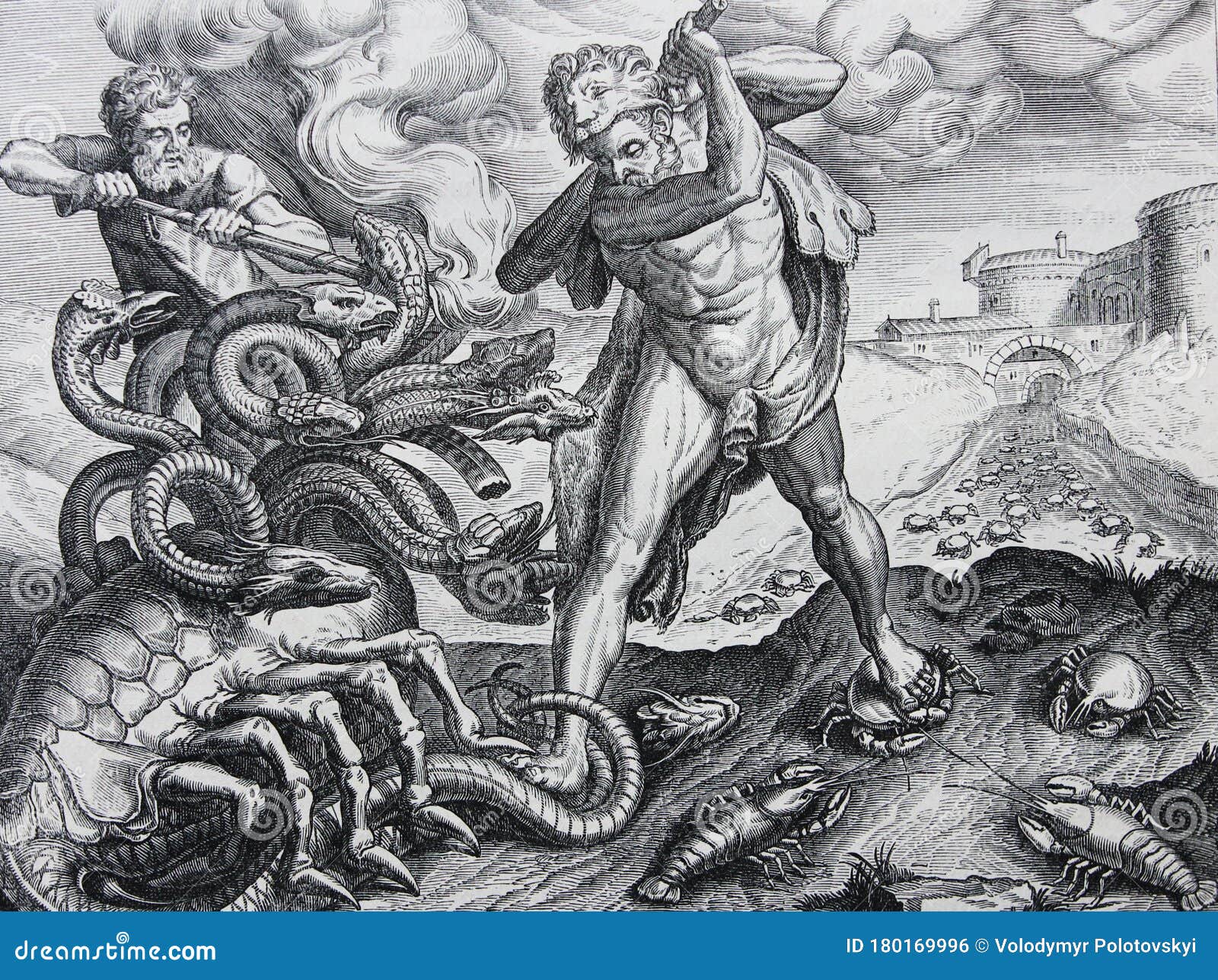
Hercules Killing the Lernean Hydra by Frans Floris Engraved in a
The Lernean Hydra The second labor of Hercules was to kill the Lernean Hydra. From the murky waters of the swamps near a place called Lerna, the hydra would rise up and terrorize the countryside. A monstrous serpent with nine heads, the hydra attacked with poisonous venom.
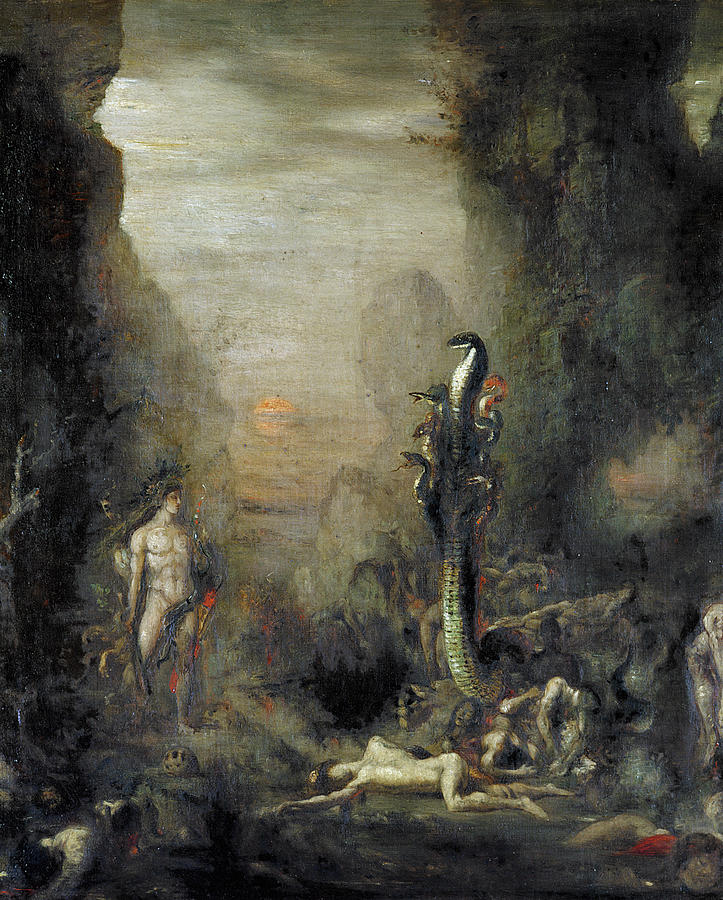
Hercules And The Lernaean Hydra, After Gustave Moreau, C.1876 Oil On
In the canonical Hydra myth, the monster is killed by Heracles ( Hercules) as the second of his Twelve Labors. [2] According to Hesiod, the Hydra was the offspring of Typhon and Echidna. [3] It had poisonous breath and blood so virulent that even its scent was deadly. [4]

Hercules and the Lernaean Hydra The Art Institute of Chicago
Hydria (ceramic water container) depicting Heracles killing the Lernaean Hydra (an ancient serpent-like water monster), from Etruria, attributed to the Painter of Aquila, 530-500 BCE. (photo taken at the Monsters. Fantastic Creatures of Fear and Myth exhibition at Palazzo Massimo alle Terme, Rome) Remove Ads Advertisement About the Author

Heracles and the Lernaean Hydra Statue at Hofburg Palace by Edmund
The Labours of Hercules or Labours of Heracles ( Greek: ἆθλοι, âthloi [1] Latin: Labores) are a series of tasks carried out by Heracles, the greatest of the Greek heroes, whose name was later romanised as Hercules. They were accomplished in the service of King Eurystheus. The episodes were later connected by a continuous narrative.